In June 2020, a team of Canadian astronomers made an estimation that the Milky Way galaxy may host as many as five billion Earth-like planets, all orbiting around stars similar to our Sun. However, this estimate only accounts for the visible portion of potentially habitable planets. The truth is, there could be many more of them out there, especially around different types of stars. In fact, the conditions on exoplanets in other star systems might be even more conducive to supporting life than what we currently have on Earth. Let’s delve into the reasons behind this intriguing possibility.
Stars come in various types and sizes. The ones that are more massive, such as our own Sun (a yellow dwarf star of spectral class G2) or the white star Sirius A (a star of spectral class A1), can be seen from great distances spanning multiple light years. As the mass of a star increases, so does its luminosity, but not in a linear fashion. For instance, Sirius A is only twice as heavy as our Sun, yet it shines an astonishing 25 times brighter.
Conversely, the Sun, despite being much lighter than the heaviest and largest red dwarf (spectral class M0), shines about 15 times brighter. On the other hand, the lightest red dwarfs (M9) are significantly lighter than the Sun, but emit many thousands of times less light.
This phenomenon gives rise to what is known as the “invisible part of the iceberg” effect: there are numerous red dwarfs in the vicinity of Earth (and in the wider Universe), but they are difficult to detect. Proxima Centauri, the closest star to Earth, is one such red dwarf. Despite being only 4.3 light-years away, it cannot be seen with the naked eye. Estimating the exact number of these objects in the Universe is challenging. Estimates range from 70% to 90% of all known celestial bodies, with most estimates hovering around 75-76%.
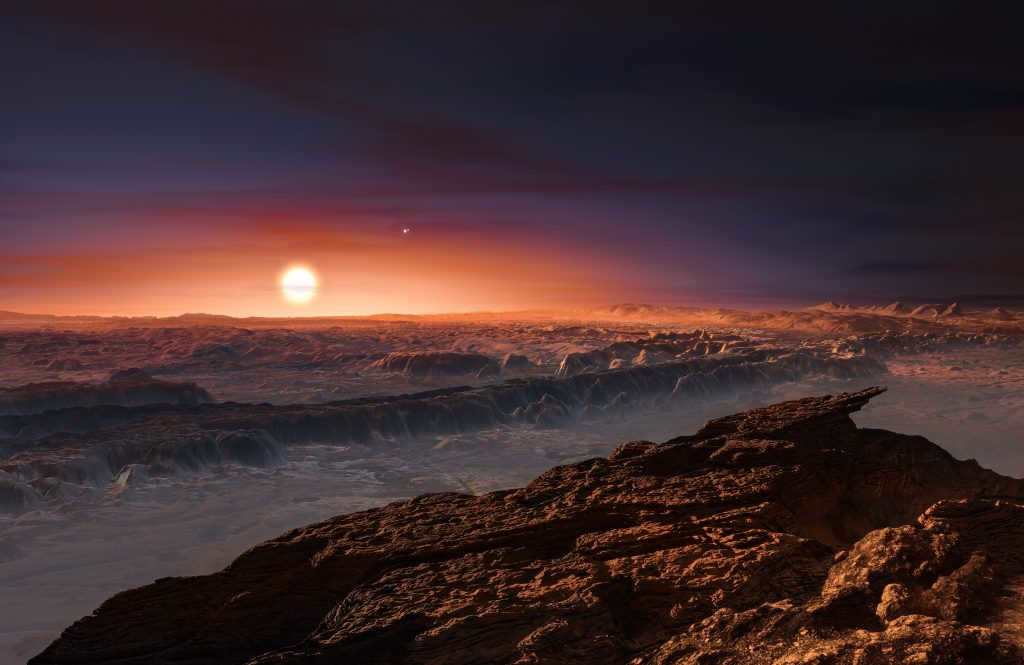
Scientists from Canada attempted to estimate the quantity of Earth-like planets orbiting yellow dwarfs by analyzing data from space telescopes, which captured images of 200,000 stars. Their findings revealed that approximately 7% of the 400 billion stars in our galaxy are classified as yellow dwarfs, resulting in a total of 28 billion such stars. By utilizing available information on the prevalence of planets in G-class stars, researchers calculated that in 18% of these systems, there could potentially exist an Earth-sized planet within the habitable zone. In total, there could be up to five billion planets meeting these criteria.
Now, let’s take a look at this scenario from the perspective of stars that are not yellow dwarfs like our own star, but rather orange (which make up 12% of all stars) and red (which make up 76%). It appears that there are approximately 300 billion red stars in the Milky Way alone, which is 11 times more than the number of yellow stars. Additionally, according to calculations made by other astronomical groups, there may be a significant number of planets with a mass similar to Earth’s and located within the habitable zone around these red stars. It is estimated that 40% of all red dwarfs could potentially have such exoplanets, meaning that there could be up to 120 billion habitable planets orbiting these stars.
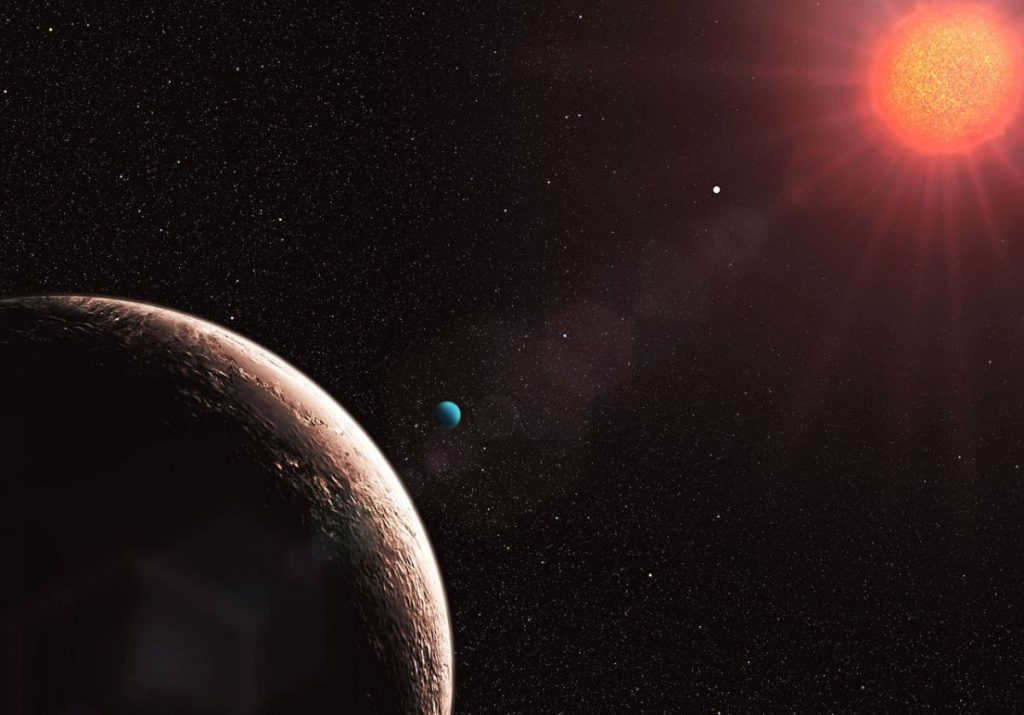
Naturally, the mere existence of a celestial entity within the potential habitable zone does not guarantee the existence of life there. The primary inquiry in contemporary exoplanetary astronomy is whether these planets are truly capable of supporting life.
What’s the issue with the red dwarfs’ light?
Despite its name, an individual standing on a planet near a red dwarf will not witness a red-hued celestial body in the sky. This phenomenon can be attributed to the idiosyncrasies of human vision, which captures photons of various wavelengths from light sources and “mixes” them, resulting in a perceived color that is not the true representation of the object. A perfect example of this is our own Sun. The majority of its energy is emitted in the green section of the visible spectrum. One can easily grasp this concept by observing the surrounding foliage, which effectively reflects this particular portion of solar radiation to prevent overheating during the abrupt transition from shade to sunlight.
For a considerable period of time, certain scientists held the belief that the predominantly red and infrared radiation emitted by red stars would pose a significant issue for plants residing on the surrounding planets. It is true that the energy carried by these photons is lower than that of the green light which dominates the Sun’s radiation. Could it be possible, however, that red light and infrared radiation are adequate for the process of photosynthesis? It is worth noting that conventional chlorophyll is unable to effectively utilize light waves from the far red section of the spectrum, which encompasses wavelengths of 700 nanometers and above.
Not only can oxygen be produced by chlorophyll, but it can also be formed through other means. For example, bacteria possess a protein called bacteriorhodopsin, which is similar to the more common rhodopsin and is used to perceive light. However, photosynthesis involving bacteriorhodopsin does not typically generate oxygen, making it impossible to sustain a complex biosphere with oxygen-dependent multicellular organisms.
So, is the light emitted by red stars unsuitable for supporting complex life? To answer this question, it is not necessary to embark on a journey to distant stars. In 2010, researchers discovered chlorophyll f (with an approximate chemical formula of C55H70O6N4Mg) on the western coast of Australia.

Unlike other forms of chlorophyll, it allows for “traditional” photosynthesis that produces oxygen – but from photons that have wavelengths of up to 720 nanometers. The rationale behind its utilization by aquatic photosynthetic organisms is evident: the shorter the wavelength of electromagnetic radiation, the more effectively it is absorbed by water. Hence, in certain situations, employing the far red spectrum proves to be more beneficial.
Will Flares Cause the Extinction of All Life?
One aspect of red dwarfs that astronomers frequently discuss is their tendency to produce powerful flares, which our Sun only displayed during its early stages of existence. During these events, the levels of X-ray and ultraviolet radiation emitted by the star increase dramatically – to the extent that some claim it could “exterminate” life on any planets in its vicinity.
Considering this, astronomers have attempted to determine the potential effects of intense UV and X-ray bursts emitted by low-mass stars. Their research indicates that certain planets within the habitable zone of the red dwarf TRAPPIST-1 (located 39.6 light-years away) may experience water loss equivalent to 15 Earth oceans. This process occurs when ultraviolet radiation breaks down water vapor molecules into hydrogen and oxygen, with the lighter hydrogen molecules dissipating into space.
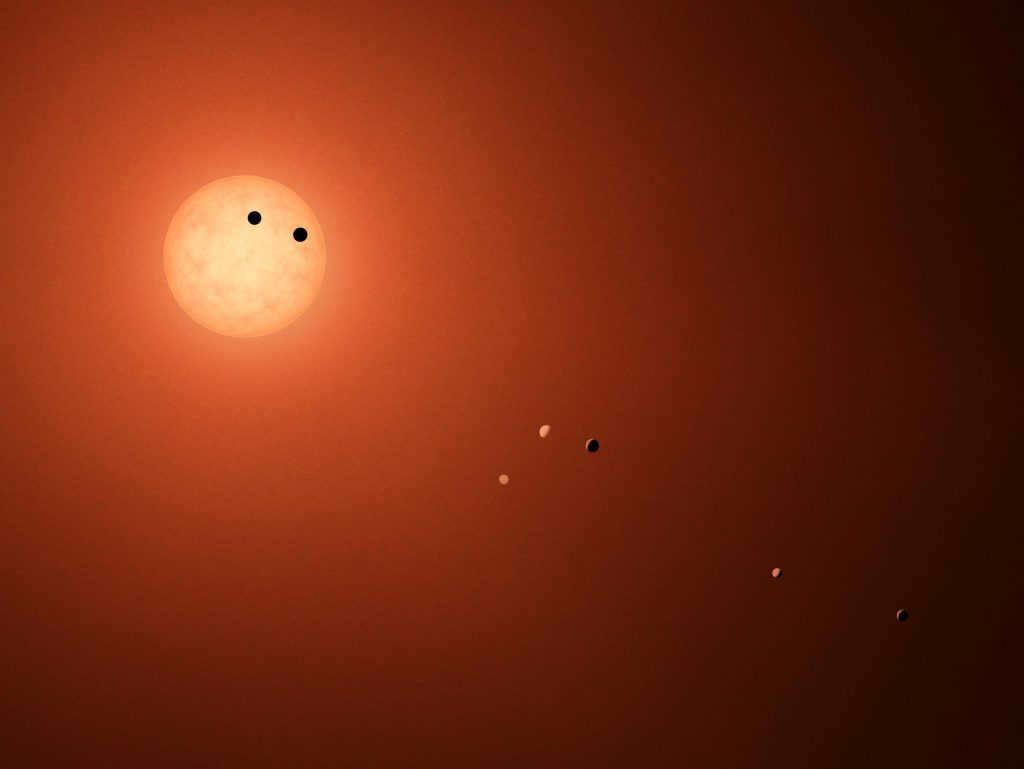
However, let’s shift our focus to the specific characteristics of the seven planets within the TRAPPIST-1 system. Are they truly devoid of water? Within the habitable zone, we find three planets – TRAPPIST-1e, f, and g. The first planet has a density similar to that of Earth, measuring at 1.024 Earth-like units. The second planet has a density of 0.816 Earth-like units, while the third planet has a density of 0.759 Earth-like units. It is evident that two out of the three planets likely contain a higher proportion of lighter elements compared to our own planet. For planets with similar masses, water serves as the primary source of these lighter components, as bodies of such size lack the gravitational force necessary to retain a substantial hydrogen or helium atmosphere.
Is it possible that the absence of water on planets within the habitable zone is a result of exclusion and an abundance of water only found on worlds within the TRAPPIST-1 system? The answer is no. In fact, in other red dwarf systems, planets within the habitable zone typically have a density similar to that of Earth or even lower. This means that they cannot be considered completely devoid of water, even in the face of intense UV and X-ray flares.
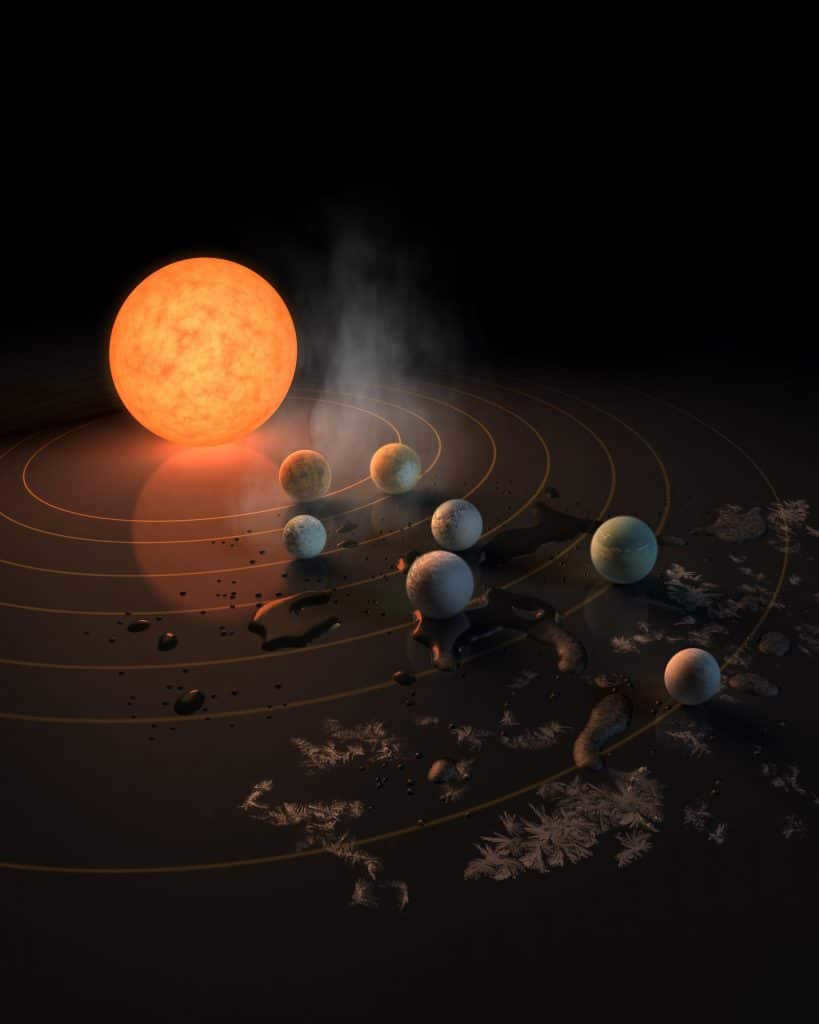
Exploring the Retention of Water and the Potential for Life to Develop
Astronomers are still searching for an explanation as to why we currently observe this particular phenomenon. It is widely believed that water on Mars was lost due to the effects of solar UV radiation, which breaks down water molecules.
When it comes to planets orbiting red dwarfs, there are two potential explanations for how they managed to retain their water.
The first scenario can be described as “while the fat is drying, the thin will evaporate”. The reality is that most red dwarf systems with exposed planets appear unnatural. Their planets are densely packed, positioned very close to their star. The nearest of the seven planets in the TRAPPIST-1 system is located 1.73 million kilometers away from its star, while the furthest is only 9.27 million kilometers away. Consider this: seven planets within 7.54 million kilometers!
In our own solar system, the seven planets closest to the star are spread out in orbits ranging from 58 million kilometers (Mercury) to 2.88 billion kilometers. Their distribution in space is 370 times more expansive than that of the TRAPPIST-1 exoplanets. Between Mercury and the Sun in our system, you could fit seven TRAPPIST-1 seven-planet systems and still have room to spare.
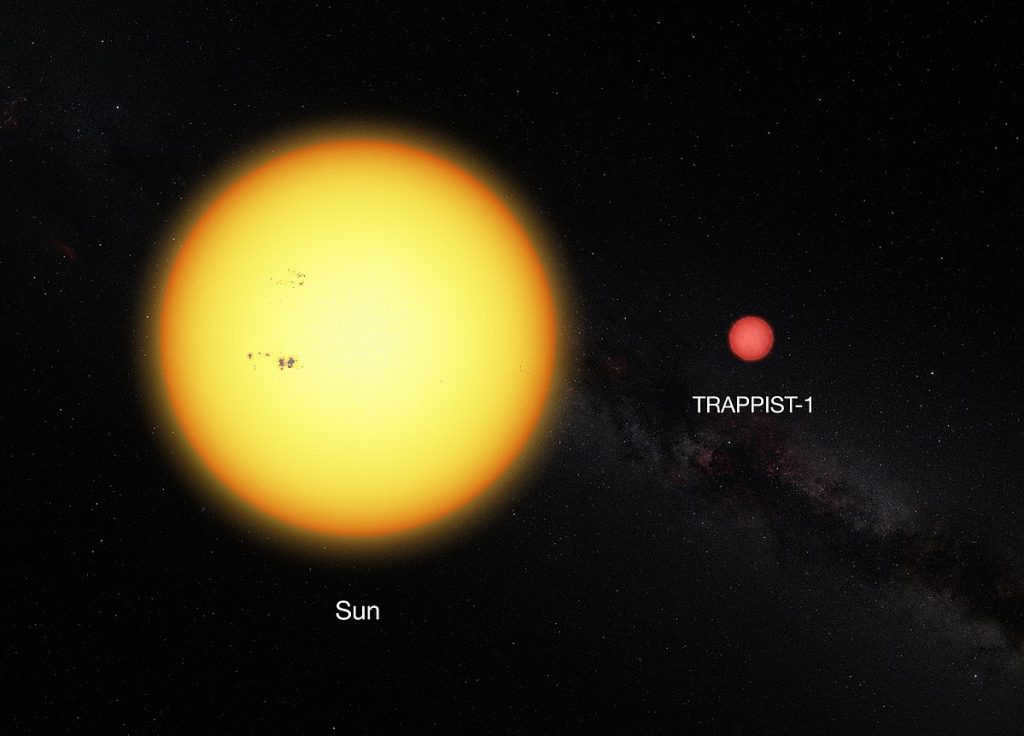
Certainly, red dwarfs are smaller compared to the Sun. And it is expected that their protoplanetary disks would also be smaller, but not by a mere factor of 370. All of this leads scientists to speculate about the possibility of planets forming around red dwarfs in orbits that are farther away from the star, followed by migration closer to the star. This migration process is similar to what we discussed in the January edition of our magazine regarding the Solar System, but it is more extreme.
In this scenario, the proportion of light elements on planets in the habitable zone of low-mass stars would initially be very high – much higher than on Earth. Even if powerful stellar flares were to remove significant amounts of water, the water “reserve” on such planets would still not be reduced below the level of Earth.
The alternative scenario for surviving under ultraviolet light is the existence of the ozone layer. Based on the calculations of astronomers, if there is a substantial oxygen atmosphere and a continuous ozone layer, the average level of UV radiation that reaches the surface of a planet similar to Earth in a red dwarf system would not be significantly higher than on Earth, even during severe outbreaks. This is particularly applicable in cases where the atmospheric density is considerably greater than that of Earth.
This particular situation has a vulnerability: a noticeable quantity of free oxygen must originate from an external source. Based on the knowledge gained from terrestrial life, it seems that this occurrence only happens billions of years after the planet’s formation – due to the activity of certain photosynthetic organisms that generate oxygen (as previously mentioned, not all photosynthetic organisms possess this capability). However, if ultraviolet light is expected to eradicate all life on the planet’s surface, where could a substantial ozone layer come from on young planets?
The solution to this query may reside in the substantial protection that even a thin layer of water provides to any living organism against UV light. If a photosynthetic organism thrives in an aquatic habitat, UV light does not hinder its growth. Consequently, when it produces free oxygen, it can safely transition onto land (with regards to UV reduction).
Can Life Exist under a Stationary Sun due to Tidal Capture?
Doubters may bring up another frequently mentioned issue regarding planets orbiting red dwarfs – tidal entrapment. As demonstrated earlier, a habitable planet in such a system is located only millions of kilometers away from its star. Nearby planets in such close proximity would appear as moons in the sky, and their own moons would be significantly brighter than Earth’s.
The close proximity of the star implies that its gravitational force will eventually cause its planets to become “fixed”. Similar to how the Earth forces the Moon to always have one side facing it, red dwarf stars will often illuminate only one side of their habitable planets, leaving the other half perpetually in darkness. This phenomenon is known as tidal entrapment between the star and the planet. Does this mean that life would “burn out” on the sunlit side and freeze on the shadow side?
Astronomers answered this question a few years ago by utilizing detailed models of exoplanet atmospheres to study their behavior in the event of tidal capture.
Russia has given its approval to the decision to establish a national space station (ROS) and withdraw from the ISS. Detractors argue that creating such a station will be impossible. Unfortunately for them, they are mistaken: in reality, it is feasible.
If you find yourself under clear skies and have the opportunity to venture beyond the confines of the city, stargazing is an unparalleled experience. During these moments, the number of stars seems infinite. Of course, we can only observe a fraction of them.
What is even more remarkable is that many of these stars bear resemblance to our Sun, as they possess their own planetary systems. This naturally leads to the question, “How many planets exist within a galaxy?”. In our very own Milky Way galaxy alone, there are billions of them.
What is the number of planets orbiting stars?
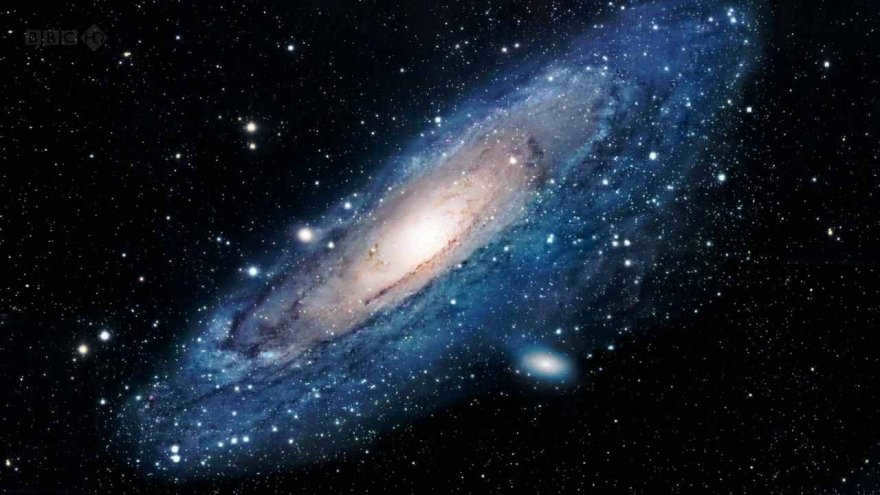

An artistic interpretation of the Milky Way Galaxy. According to exoplanet data, it is believed that there are tens of billions of habitable planets that can be found
To comprehend the quantity of planets that can be found within the Milky Way or any other galaxy, let’s examine the numbers and assumptions. Advancements in technology have enabled the discovery of numerous exoplanets, although the solar system remains the most extensively researched. As a result, the number of star systems could potentially be much greater.
Number of exoplanets discovered per year
Let’s start with the 8 planets in the solar system as a baseline (excluding dwarfs, centaurs, and other large bodies) and consider it an average number. Next, we will need to multiply this by the number of stars in the galaxy.
Quantifying the Number of Stars in a Galaxy
Unfortunately, determining the exact number of stars in the Milky Way is a challenging task as there is still ongoing debate on this matter. Our observation is limited to the interior, preventing us from obtaining a complete picture. This is further complicated by the fact that our galaxy is spiral-shaped with a bulge, obstructing our view to the other side.
The calculation is based on the galactic mass and the proportion of stellar mass within it. Let’s perform the calculations and obtain a range of 100-400 billion stars (some estimates suggest a trillion). By multiplying, we can estimate that there are between 800 billion and 3.2 trillion planets (possibly 8 trillion) within the Milky Way. However, if we want to determine the number of potentially habitable ones, we must consider the number of exoplanets.
What is the number of habitable exoplanets in our galaxy?
According to the latest data, there are 3,397 confirmed exoplanets out of a total of 4,696 potential candidates (between 2009 and 2015) in the Milky Way. Some of these exoplanets have been directly observed, while most have been detected indirectly using methods such as radial velocity and transit.
In the case of radial velocity, scientists observe the gravitational influence of an exoplanet on its host star. By measuring the back and forth movement of the star, they can determine if it has a planetary system and estimate the mass of the planets. Transit method, on the other hand, focuses on the slight dimming of a star’s brightness when a planet passes in front of it.
The Kepler mission has been instrumental in this field, monitoring approximately 150,000 stars, mainly M-class red dwarfs. These stars have low mass and emit faint light.
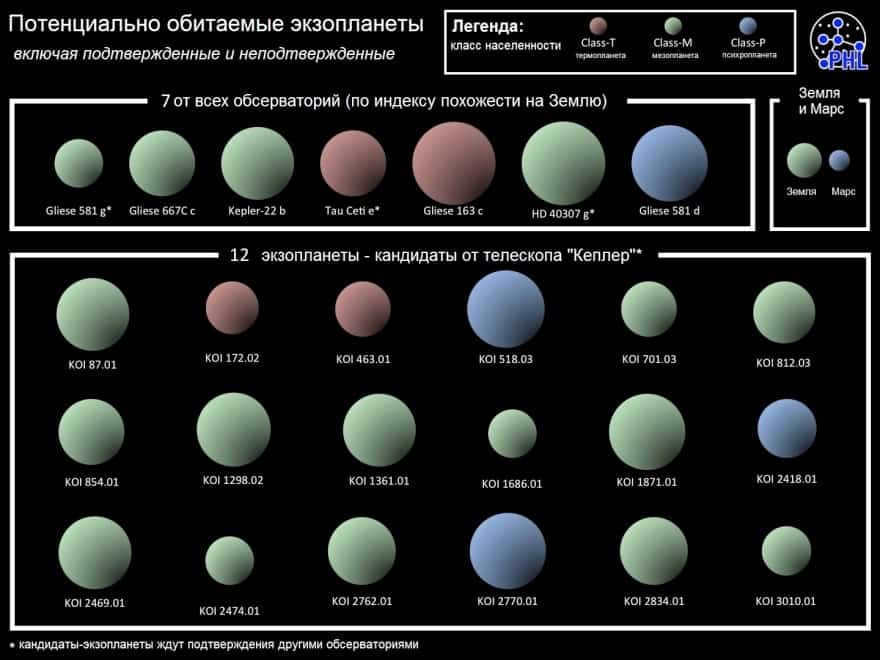
Possibly inhabitable exoplanets
Following a four-year mission, Kepler transitioned to the K2 phase in November 2013. The focus shifted to K and G stars, which are relatively bright compared to the Sun. We have identified 24% of M-class stars that have Earth-sized planets with the potential for habitability (smaller than our own planet by a factor of 1.6). If we consider only this type, there are approximately 10 billion Earth-like worlds with a significant chance of being habitable, orbiting within the Milky Way.
Furthermore, it is estimated that about a quarter of these planets may exist within the habitable zone, similar to Earth. Kepler has been able to study around 70% of the stars in our galaxy, revealing the existence of tens of billions of potentially habitable planets.
The introduction of the James Webb and TESS telescopes has the potential to augment this figure, as they possess the capability to identify minuscule planets existing in proximity to dim stars. There is even the possibility of detecting signs of life in these celestial bodies. The commencement of these missions will enable a more precise evaluation of the quantity and mass of planets encircling distant stars. However, the current statistics are already highly intriguing, as they provide assurance that we are not solitary beings in the vast expanse of space.
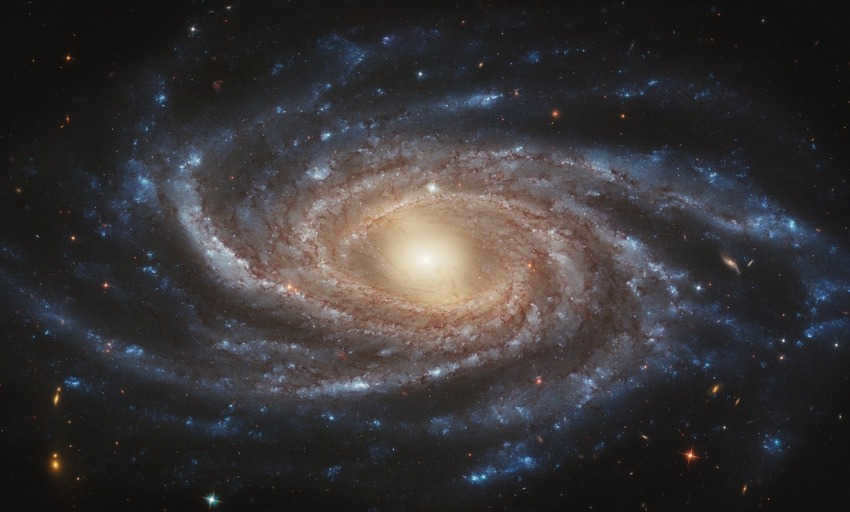

The Milky Way is a vast galaxy that encompasses our own solar system. From the perspective of Earth, it appears as a luminous band of light in the night sky, composed of countless stars that are indistinguishable to the naked eye.
Scientists estimate that the Milky Way galaxy contains an astonishing range of stars, ranging from 100 to 400 billion. Within our galaxy alone, astronomers have already identified over 5,000 exoplanets – planets that orbit stars other than our Sun. While this may sound like a considerable number, it is merely a fraction of the total planets that likely exist within the Milky Way. So, just how many planets are there within our galaxy?
Stars and planets
If a thorough examination is conducted on each star in the Milky Way and the existence of each individual planet is confirmed, it would be possible to determine the precise number of planets in our galaxy. However, this task is currently impractical, so astronomers rely on estimations based on their knowledge of stars and planets.
As an example, astronomers can calculate the average number of planets per star by considering all stars that are known to have planets. By extrapolating this average to encompass the entire galaxy, astronomers can provide us with a rough approximation of the total number of planets in the Milky Way.
The information received from telescopes that search for planets indicates that, on average, every star has at least one planet in orbit. Considering that there are approximately 100 billion stars in the Milky Way, this would mean that there are around 100 billion planets. Nevertheless, it is worth mentioning that this average is derived from observations of only a small number of stars, and given that galaxies contain billions of stars, the actual average number of planets can vary greatly.
Is it possible to have more planets than stars?
Is it possible for there to be a greater number of planets than stars in a given solar system? The solar system, for example, consists of one star and eight planets. Interestingly, the number of planets in our solar system far surpasses the number of stars. If every solar system had a greater number of planets than stars, then the total number of planets in our galaxy would greatly exceed the number of stars.
The estimation of 100 billion planets is likely the minimum number of planets that exist. If each star had the same number of planets orbiting around it as our solar system, then the galaxy would contain at least 800 billion planets, or eight times the number of stars.
Even if each star had only two planets orbiting around it, the number of planets would still be twice the number of stars.
A free-floating planet, also known as a rogue planet, unbound planet, or wandering planet, is a celestial body of planetary size that exists in interstellar space. These planets are smaller than stars and brown dwarfs, and they do not orbit any star or have their own planetary system.
Rogue planets are objects that were either expelled from the planetary system they formed in, or were never gravitationally bound to any star or brown dwarf. It is estimated that there could be billions or even trillions of these rogue planets in the Milky Way alone.
A recent study suggests that NASA’s upcoming space telescope, the Nancy Grace Roman, has the potential to detect hundreds of these rogue planets in our galaxy. The discovery and identification of these planets will greatly contribute to scientists’ understanding of the total number of rogue planets in the Milky Way.
Exploring Beyond the Milky Way
The majority of exoplanets that have been discovered so far are located within the Milky Way galaxy. However, a small number of exoplanets have also been confirmed to exist in other galaxies.
Considering the vast number of known planets in our own galaxy, it is reasonable to assume that planets are a common occurrence during star formation. This principle likely applies to other galaxies as well, as the laws of physics are universal.
This implies that there are trillions upon trillions of individual planets scattered throughout the universe. It is truly mind-boggling to comprehend that any planet you can imagine, as long as it abides by the laws of physics, probably exists somewhere out there. Each of these worlds has its own unique history and evolutionary path, creating an incomprehensible number of worlds within an apparently infinite cosmos.
Based on certain estimations, it is believed that the Milky Way galaxy might host anywhere from 800 billion to 3.2 trillion planets that could potentially sustain life. Nevertheless, there are experts who argue that this figure could potentially reach as high as eight trillion.
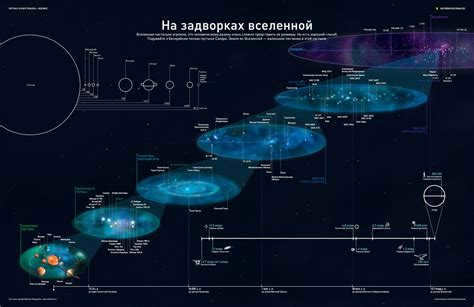
Content
- What is the actual number of planets?
- Which planet has the lowest temperature?
- What is the largest star in existence?
- Which galaxy is our home?
- How many planets similar to Earth are there in the universe?
- Where can we find the coldest city in Russia?
- Which planets have the highest temperatures?
- Where else can we find water besides Earth?
- What is the nearest star to us?
- The main belt, which also includes various types of comets. All asteroids in this group share similar characteristics.
- The Hilde family, consisting of dark carbonaceous asteroids. They are unevenly distributed, forming a triangular pattern with a dense cluster of bodies at each corner.
- Asteroids can be categorized into different classes.
- Pluto is a celestial body that was initially classified as a planet in 1930, but later reclassified as a dwarf planet. It is accompanied by a satellite named Charon, and there are four other satellites, although Charon is the largest among them.
- Erida, the farthest dwarf planet from the Sun, holds the second spot in terms of size, only surpassed by Pluto, but it is more massive. Originally known as “Xena,” Erida was believed to have a larger diameter than Pluto, measuring approximately 2400 kilometers. However, further research confirmed that Pluto is indeed larger. Initially, Pluto was considered the ninth planet and Erida the tenth, but in 2006, new criteria for classifying planets were established, rendering them ineligible. In 2010, after the discovery of Xena, both objects were reevaluated and designated as dwarf planets.
- Makemake, initially unnamed, was discovered in 2005 and officially recognized as a dwarf planet in 2008.
What is the true count of planets?
Based on the definition provided by the International Astronomical Union, there are a total of 8 planets in our solar system. These planets, listed in order of their distance from the Sun, include four terrestrial planets: Mercury, Venus, Earth, and Mars, followed by four gas giant planets: Jupiter, Saturn, Uranus, and Neptune.
So, how many planets are there in the entire Milky Way?
According to the latest scientific estimates, the number of planets in the Milky Way galaxy, which is home to our own planet Earth, is believed to be no less than 300 million.
Furthermore, how many systems exist within our galaxy?
As a result, the estimation is derived from the calculations involving the mass of our Galaxy and the fraction of stars within it. Based on these figures, scientists have deduced that the Milky Way is home to a staggering 100 to 400 billion stars. Consequently, the Milky Way galaxy could potentially host anywhere from 800 billion to 3.2 trillion planets.
What is the planet with the highest temperature?
Venus boasts an average surface temperature of 735 K (462 °C), thus earning the title of the hottest planet in our solar system, despite being further away from the Sun than Mercury.
Which planet holds the title for being the coldest in the solar system?
Without a doubt, Uranus takes the crown as the coldest planet in our solar system, even though it is 1.7 billion kilometers closer to the Sun. This frigid planet has a bone-chilling minimum temperature of minus 224°C.
What is the largest galaxy in the Universe?
Astronomers have made an astounding discovery – the largest spiral galaxy known to exist in the entire Universe. This colossal galaxy is estimated to be a whopping five times bigger than our very own Milky Way galaxy. The galaxy that has earned this prestigious title is none other than the spiral junction galaxy NGC 6872, which is located a mind-boggling 212 million light-years away in the constellation Peacock.
Which planet closely resembles Earth?
The planets that bear a striking resemblance to our own beloved Earth are Mercury, Venus, Earth, and Mars. These four planets, in that specific order starting from the Sun, share many similarities such as their size, mass, structure, and position in the solar system. However, they stand in stark contrast to the massive giant planets.
What sets a planet apart from a star?
The main difference between stars and planets lies in their ability to produce light and energy. Stars generate light and energy through continuous combustion within their cores, while planets do not possess the capability to generate light or energy; instead, they rely on receiving and reflecting sunlight.
Which star holds the title for being the largest in the world?
| HV 2112 | 918 |
| Betelgeuse (Alpha Orion) | 887 + 203 — 1200 |
| V602 Kiel | 860 |
| Antares | 800 — 900 |
Which galaxy is our home?
The Milky Way, also known as the Galaxy, is the spiral galaxy that encompasses our planet Earth and the entire solar system. The field of galactic astronomy is dedicated to studying the Milky Way.
What sets galaxies apart from the universe?
A galaxy is a complex system comprising stars, star clusters, gas, dust, and dark matter. All objects within a galaxy are interconnected and revolve around a central point. On the other hand, the universe encompasses everything, including stars, planets, comets, asteroids, and the vast expanse of interstellar space. An example of a galaxy is the Milky Way.
Which planet holds the title for being the largest in the world?
Jupiter, the largest planet in the solar system, will come face to face with the Sun on June 10. A face-off occurs when a planet is in alignment with the Earth and the Sun, with the Earth situated between the planet and the Sun.
Which planet is the most stunning in the universe?
Which planet is the most stunning in the universe? Saturn is recognized as one of the most exquisite and beloved planets within the solar system.
Which planet is the tiniest in the universe?
The solar system’s tiniest planet: Mercury
What is the total number of Earth-sized planets in the universe?
By multiplying the number of galaxies by the number of stars in each galaxy, we can calculate that there are approximately 5×10²⁴ Earth-sized planets in the universe. This estimation is based on the assumption that the number of planets in our star system is average.
The solar system consists of eight planets, namely Mercury, Venus, Earth, Mars, Jupiter, Saturn, Uranus, and Neptune. Additionally, there are several dwarf planets such as Ceres, Pluto, Haumea, Makemake, and Erid. It is also possible that more celestial objects, including Sedna and many others, may be classified as dwarf planets in the future.
How many planets similar to Earth exist in the universe?
What can we find near the Moon?
In the field of astronomy, a conjunction is a specific arrangement of celestial objects that brings them into close proximity in the sky. These events usually involve the Moon and one of the planets in our solar system, such as Venus, Mercury, Mars, Jupiter, or Saturn. It is important to note that these occurrences are purely optical in nature.
Which planet has the highest iron content?
Mercury is the planet in our solar system that bears the closest resemblance to this type of celestial body.
What is the coldest city in Russia?
Verkhoyansk, located in Russia, holds the title for being one of the coldest places on Earth and the coldest city in the world. In January 1885, Verkhoyansk experienced a record-breaking temperature of -67.8 °C. Due to its extreme cold temperatures, Verkhoyansk is often referred to as the “cold pole” of the northern hemisphere.
Which planet has the ability to float?
Saturn, one of the planets in our solar system, has a unique characteristic that sets it apart from the others. Unlike other planets, Saturn has a lower density than water, which means that it would actually float if placed in a large enough ocean. Its radius is approximately nine times larger than that of Earth.
Which planets have the highest temperatures?
Out of all the planets in the solar system, Venus holds the title for being the hottest. Surprisingly, it is even hotter than Mercury, which is located closer to the Sun. Venus boasts an average surface temperature of 460ºC, thanks to a widespread greenhouse effect that envelops the entire planet.
What is the tiniest star in existence?
Is there a star smaller than anything else in the universe? Yes, there is! EBLM J0555-57Ab, a celestial object slightly larger than Saturn and 85 times more massive than Jupiter, has been identified and measured as the smallest star ever discovered (source: Astronomy & Astrophysics, in press).
Which is the smallest galaxy on record?
Is there a galaxy tinier than any other known to scientists? And what is the closest galaxy to our own?
The Andromeda Galaxy is an observed spiral galaxy located in the Andromeda constellation, approximately 740-830 kiloparsecs away from the Milky Way. It falls under the Sb category according to the Hubble classification. This galaxy holds the title of being the largest within the Local Group, and it also happens to be the closest large galaxy to our Milky Way.
Are there any other locations in the universe where water can be found?
Scientific evidence suggests that certain moons orbiting giant planets such as Jupiter, Saturn, Uranus, and Neptune might have water beneath their icy exterior. However, apart from Earth, there is no definitive proof of liquid water within our solar system.
What would occur if planet Earth came to a halt?
The Earth’s outer layer, known as the crust, along with the upper portion of the mantle, will transform into a cluster of asteroids and fragments of melted rock, embarking on a perpetual orbit around the Sun. Regrettably, no living beings will endure this cataclysmic event. Over time, due to the gravitational pull, these scattered fragments will gradually come together, ultimately coalescing to create a pristine celestial body – a phenomenon known as accretion.
The star Proxima Centauri, also known as Alpha Centauri C, is the closest star to the Sun. It is a red dwarf star and is part of the Alpha Centauri star system.
Is it possible to see Jupiter with the naked eye?
Jupiter, with a magnitude of -2.2, can be seen in the evening sky. It appears as a very bright star located high above the southern horizon in the constellation Pisces. Throughout the month, it gradually sets earlier, with it setting after midnight at the beginning of the month and after eleven pm by the end of January.
Video: what is the total number of planets in our galaxy?
Did our responses provide assistance?
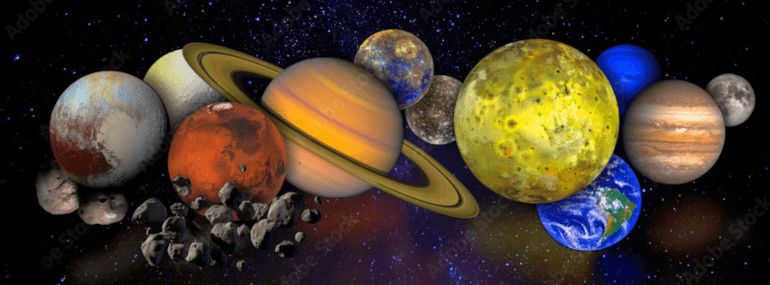
The solar system is our residence in the galaxy. It is already a vast universe to us, but in reality, our system is minuscule in comparison to the expansive cosmic realm.
The sequential arrangement of the planets in the solar system
Our system consists of eight planets orbiting a colossal star known as the Sun. Each celestial entity possesses its own awe-inspiring attributes and distinct qualities.
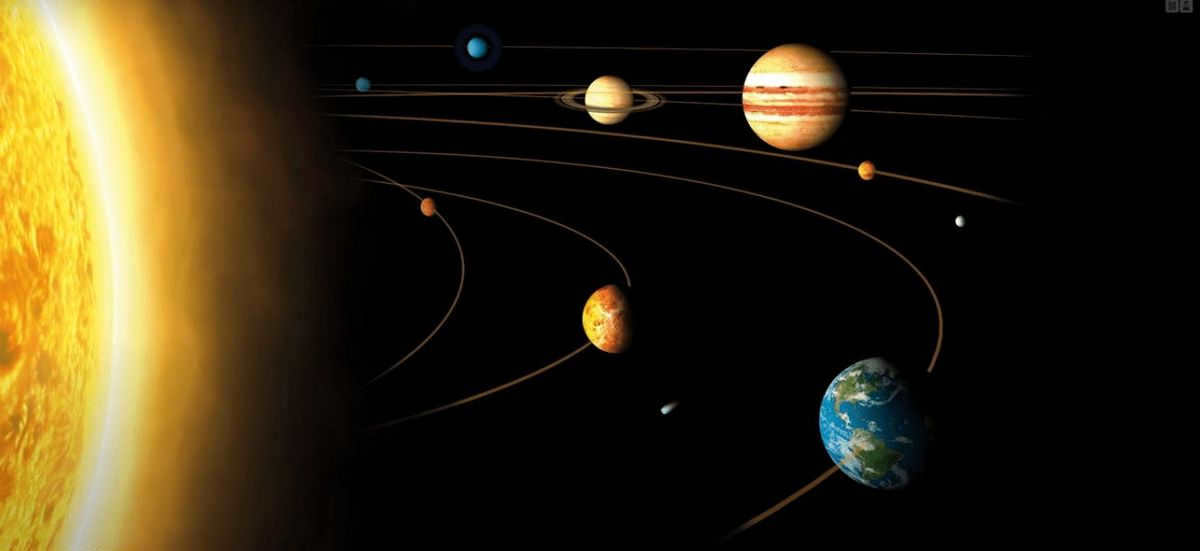
The Sun
Our planetary system revolves around the Sun, which is the only star in our solar system but one of many in the Milky Way. While the Sun moves through our galaxy, the planets, their moons, asteroids, and space debris orbit around our central star.
Mercury
Mercury is the closest planet to the Sun and also the smallest in our solar system. It has a shorter orbit and rotates faster than the other planets. A complete orbit around the Sun for Mercury takes approximately 87.97 Earth days. Additionally, Mercury holds the record for having the smallest tilt of its axis, measuring about 1/30th of a degree.
Venus
Venus is the second planet from the Sun and the 6th largest in the solar system. Unlike Earth, Venus does not have any satellites. However, it shares many similarities with our planet, such as being part of the Earth group family and having a similar size and mass. One notable difference is that Venus has the longest rotation period among all the planets in our system. A single day on Venus is almost equivalent to 247 days on Earth. Consequently, a complete rotation around the Sun, or a year, on Venus takes approximately 224.7 days on Earth.
Earth
The third celestial body in order of distance from the Sun. The solitary planet where the existence of life has been definitively established, our beloved abode. This planetary entity possesses the greatest density among its celestial counterparts. Our planet possesses a solitary satellite, known as the Moon, which ranks as the second most luminous celestial object after the Sun. While this gaseous envelope proudly bears the moniker of Earth, approximately 70% is occupied by the vast expanses of the world’s oceans, with merely 30% comprising the terrestrial masses: continents and islands.
Mars
Mars is the fourth planet in terms of its distance from the center of the solar system. This celestial body belongs to the Earth group, which also includes Mercury, Venus, and Earth. Additionally, Mars is the seventh largest planet. To put its size into perspective, its mass is only 10% of Earth’s. Mars is known for a variety of distinctive features, including its color. The planet is famously referred to as the “red planet” due to the high concentration of iron present across its surface.
Jupiter
Jupiter, the fifth planet in our solar system, holds the distinction of being the largest planet. It is part of the gas giants group, alongside Saturn, Uranus, and Neptune. One of the fascinating aspects of Jupiter is its frequent atmospheric phenomena, which are significantly more significant than those found on Earth. These phenomena include numerous storms, lightning, and awe-inspiring auroras.
Saturn, the sixth planet from the Sun, is the second largest planet in our solar system. However, what sets Saturn apart is its stunning ring system, made up of a combination of ice and space debris. Another unique feature of Saturn is its incredibly fast wind speed, reaching up to 1800 km/h. This is even faster than the wind speed on Jupiter, making Saturn a truly remarkable planet.
Uranus
Uranus, the seventh planet in our solar system, was discovered in a fascinating way. It was William Herschel who first spotted Uranus through a telescope. Despite being visible to the naked eye, Uranus appeared as a faint star. What makes this planet even more intriguing is its unique axial tilt, which is almost perpendicular to the Sun.
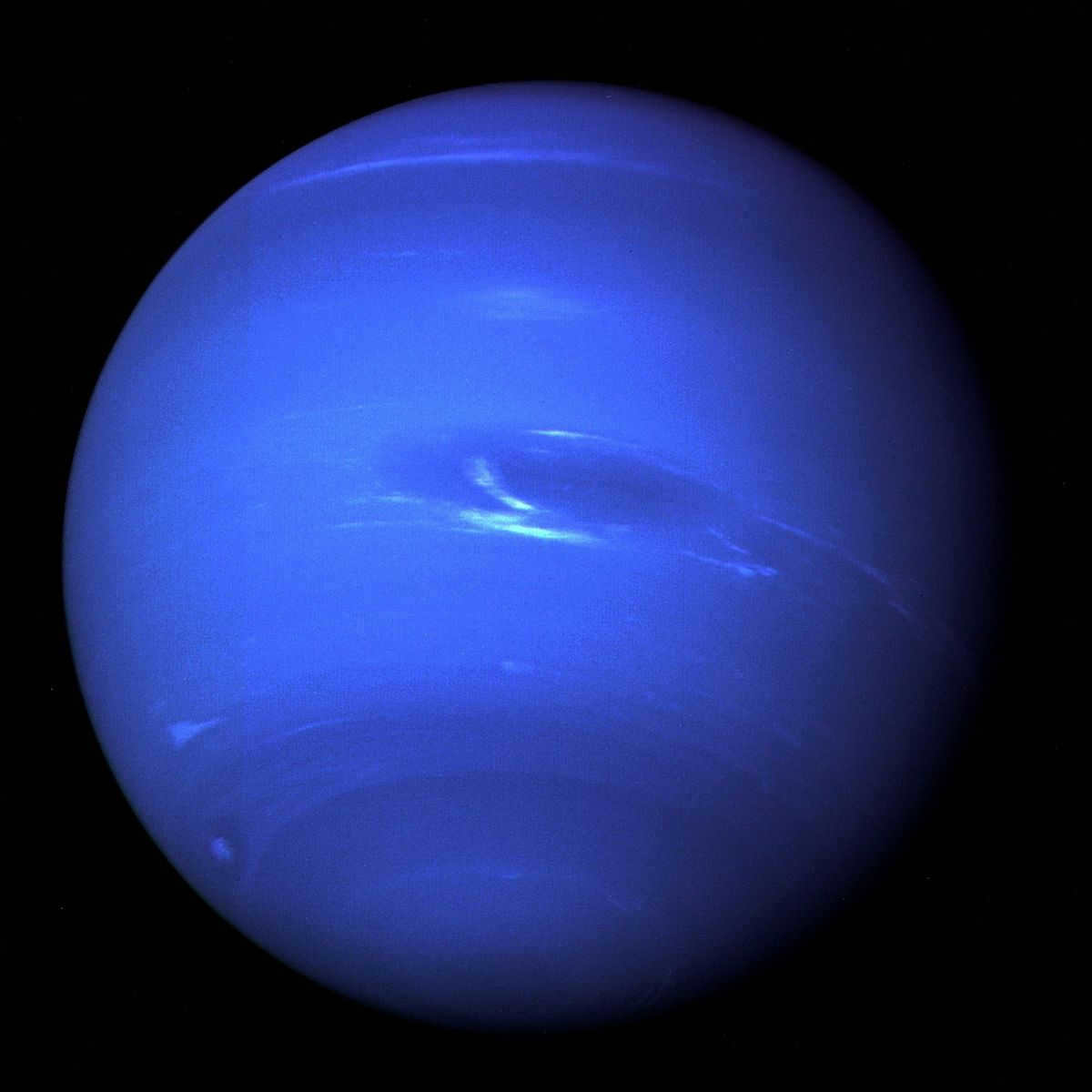
Neptune, the most distant planet from the Sun, possesses a mass 17 times that of Earth. This ice giant earned its distinction by being located through mathematical computations. The confirmation of their hypothesis came as a shock to researchers, as the field of astronomy had not yet fully matured, leaving room for the calculations to be significantly inaccurate.
Structure and characterization of the solar system
The solar system is composed of a central luminary, known as the Sun, and a collection of eight planets, as well as five dwarf planets. Each of these celestial bodies possesses unique features and characteristics, which you have already become acquainted with.
The inner region of the solar system
The inner region of the solar system encompasses the Earth group of planets and asteroids. These atmospheric bodies are located in close proximity to the Sun and share many similarities in terms of their distinctive properties.
Planets of the Earth Group
As you might have observed, this particular group consists of the four planets that are closest to the Sun. What they all have in common is that they are comprised of dense substances, they possess a maximum of two natural moons, they lack rings, and they are relatively compact in size. Additionally, each planet showcases craters, volcanoes, and indentations. Earth’s own celestial body, the Moon, also exhibits a significant number of craters.
The region between the orbits of Mars and Jupiter known as the asteroid belt
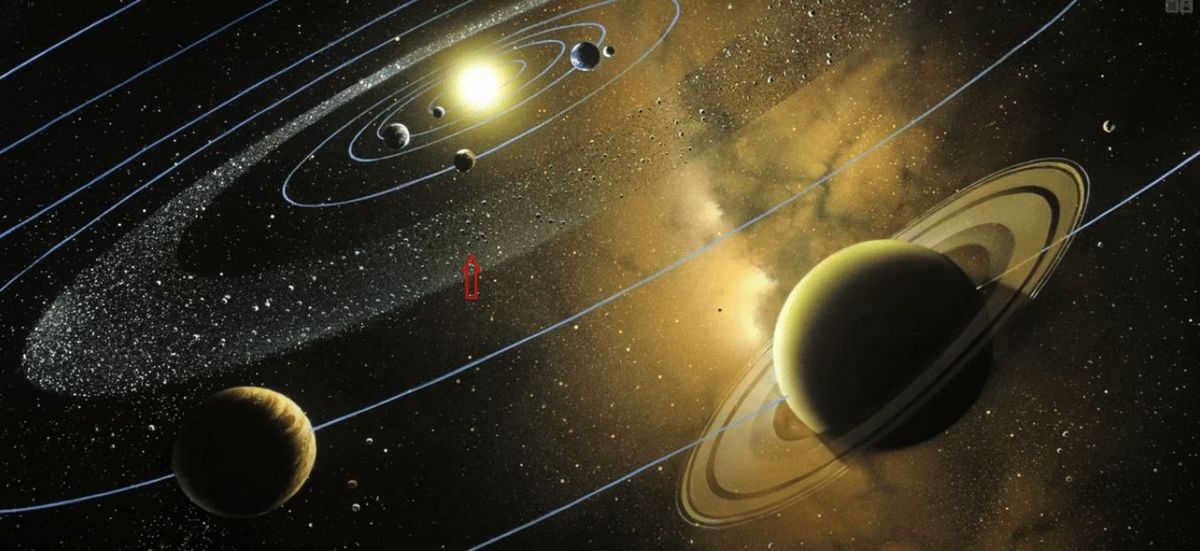
Asteroids are the most prevalent celestial bodies in the solar system, characterized by their small size and presence in the large main belt located between Mars and Jupiter.
Previously, it was believed that asteroids were remnants of a hypothetical planet that disintegrated due to unknown causes, possibly resulting from atmospheric pressure or the gravitational forces of the giant planets. However, modern research suggests that they are actually products of the solar system’s formation.
Groups of asteroids
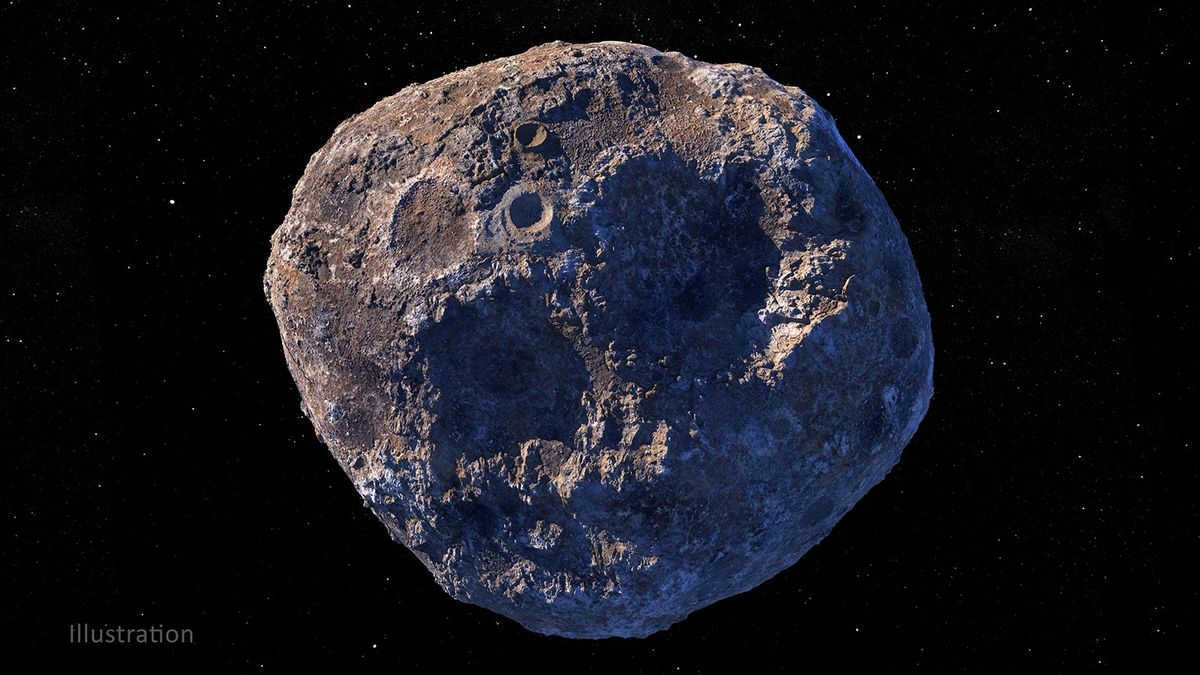
Asteroids have their own classifications, similar to planets, based on the characteristics of their orbits. Additionally, asteroids can have their own satellites, which are other asteroids. However, detecting these satellites can be challenging as they can be as large as the asteroids themselves.
So, what are the different groups that asteroids belong to?
There are various classifications for asteroids.
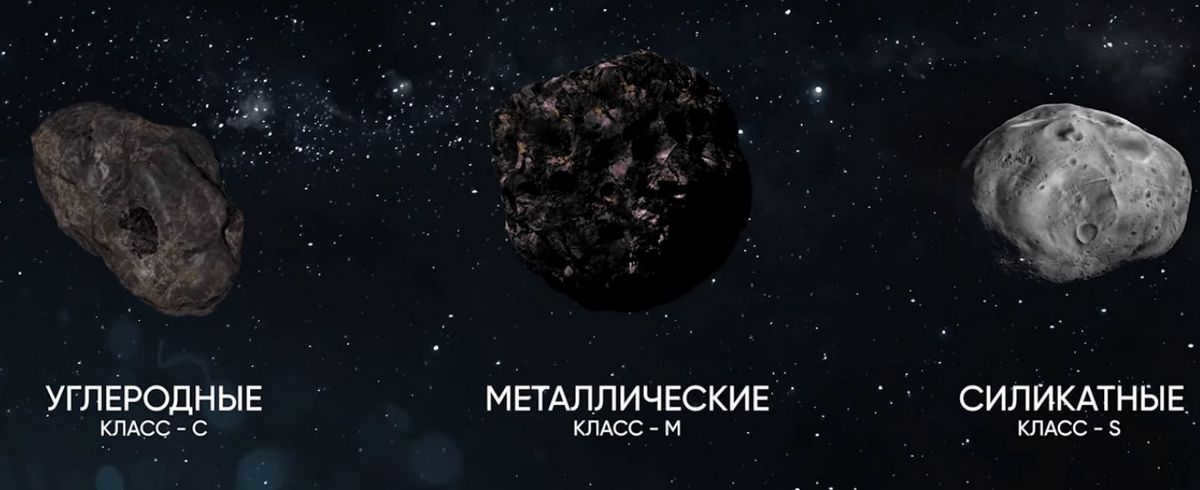
Planet Ceres
Planet Ceres is the largest celestial body in the asteroid belt and is classified as a dwarf planet. Initially, it was mistakenly identified as a planet due to its size. However, its proximity to asteroids led to its reclassification, and in 2006 it was confirmed as a dwarf planet. This classification was based on its ability to maintain a spherical shape through gravitational forces and its diameter of nearly 1000 km.
The outer realm of the solar system
This section of the solar system encompasses massive gas planets, Comets, Centaurs, transneptunian bodies, and various other celestial entities. It also comprises three distinct belts: the Kuiper belt, the Scattered Disk, and the Oort cloud.
The colossal planets
These planets, as previously mentioned, consist of Jupiter, Saturn, Uranus, and Neptune. The first two predominantly consist of helium and hydrogen, while the latter contain a significant quantity of ice in their composition.
Comets
A comet is a small celestial object in the solar system that is primarily composed of ice.
These cosmic bodies are relatively small in size, with an average diameter of up to ten kilometers. They also have a limited lifespan, ranging from short-period comets that last around 200 years to long-period comets that can survive for up to 1000 years. Short-period comets are typically found in the Kuiper belt, while long-period comets reside in the Oort cloud.
Comets meet their demise when they venture too close to the Sun. This event can be observed in the sky without the aid of a telescope, appearing as a coma—a lengthy cloud of gas and dust.
Centaurs
Centaurs bear a striking resemblance to comets in terms of their appearance and shape, although there exist some distinguishing features, particularly their significantly larger size. Additionally, they possess a higher concentration of ice in their composition. As a result, their coma is more prominently visible, yet it bears a similar resemblance to comets, which previously led to the misclassification of centaurs as comets.
The area of space beyond Neptune known as the transneptunian region remains an enigma to humanity. It remains largely unexplored, although there are theories regarding the existence of numerous small celestial bodies in this region.
The Kuiper Belt
Similar to the main asteroid belt, the Kuiper Belt is predominantly composed of ice. This belt formed during the early stages of our solar system.
Most objects within the Kuiper Belt have a diameter of roughly fifty kilometers. The largest among them may even be classified as dwarf planets.
However, if we were to combine the mass of all the objects within the Kuiper Belt, it would only amount to one hundredth of the mass of Earth.
Dwarf Planets. Although rare in our solar system, dwarf planets possess a remarkable beauty and uniqueness.
The presence of dwarf planets within our solar system
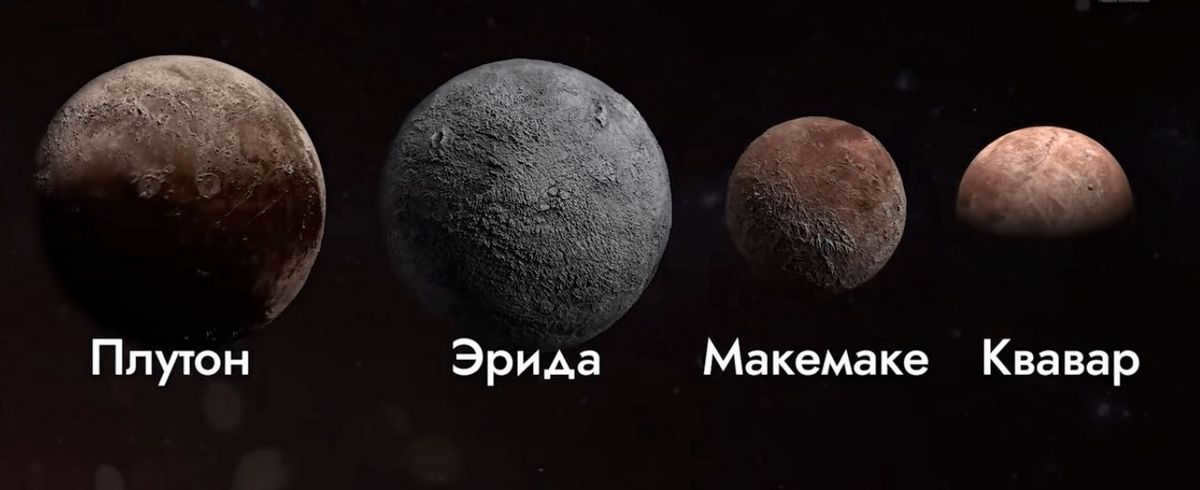
A dispersed disk
A region situated at a significant distance from the core of the solar system. It partially overlaps with the Kuiper belt; however, the number of atmospheric objects in this disk is quite limited. Additionally, there is a theory suggesting that the formation of short-period comets occurs within the scattered disk.
Objects within this disk exhibit unstable behavior and frequently migrate to other areas. Scattered disk objects are predominantly located in the Kuiper belt, although some have also been observed in the Oort cloud. Due to the occasional exchange of centaurs between the belt and the disk, scientists have started using the term “scattered Kuiper belt objects” to refer to unspecified bodies found between these regions.
Distant areas of the solar system
The solar system is abundant in different regions, however, everything has its boundaries and limits. Where does it end in our planetary system? This remains a mystery, but there are certainly hypotheses. Some suggest that the heliosphere marks the boundary between the solar system and the interstellar medium. On the other hand, there are those who believe in the existence of Hill’s sphere, which is believed to be thousands of times more distant.
Sedna
Sedna is a massive transneptunian object with similar characteristics to Pluto, except for its distinctive red color and highly elongated elliptical orbit.
Discovered in 2003, the nature of Sedna continues to be a topic of debate among scientists. While some believe it represents a new population, Michael Brown refers to Sedna as the “inner Oort cloud”.
The heliosphere: an extraordinary phenomenon
Our planetary system is nestled within a fascinating phenomenon known as the heliosphere. This celestial “bubble” is created by the stellar wind, a powerful force emitted by stars like our Sun.
Just like any other star, the Sun emits its own unique solar wind. As a result, each planet in our solar system has its own protective bubble. These bubbles are aptly named after the stars they surround.
The Sun’s solar wind propels at an astonishing speed of over 4 million kilometers per hour. This incredible velocity is a result of the galaxy’s pressure on our planetary system, propelling us through space at an impressive pace. Scientists predict that our solar system will journey beyond the Local Interstellar Cloud in approximately 10,000 years.
The Oort Cloud: A Unique Realm of Icy Objects
Within the vast expanse of space lies the Oort Cloud, a remarkable spherical formation comprised entirely of frozen matter. This extraordinary cloud is home to over a trillion celestial bodies, each one an atmospheric wonder. It is within the confines of this celestial belt that long-period comets come into existence, their majestic tails trailing behind them.
Scientists propose an intriguing hypothesis: that the Oort Cloud originated in close proximity to the Sun, only to disperse over time due to the gravitational forces exerted by the colossal planets during the early stages of the Solar System’s formation.
Occasionally, the objects inhabiting the Oort Cloud display enigmatic behavior. While their movements are notably sluggish, collisions between these ethereal bodies are a rarity.
The formation of the solar system occurred over 4.5 billion years ago. Currently, we are residing in a prosperous era. The Sun has already surpassed the halfway mark of its lifespan, and the gravitational forces of all celestial bodies have become more stable compared to their initial stages of development. Additionally, all planets have successfully formed.
The motion of celestial objects
As previously stated, asteroids, space debris, and other atmospheric bodies have reached a state of stability. Consequently, our planet faces no immediate threats in the foreseeable future.
Furthermore, the planets serenely orbit around the center of our solar system, which happens to be our most radiant celestial body. Each planet completes its revolution in varying amounts of time, yet each revolution is consistent with the previous one. Pluto, being the furthest planet from the Sun, possesses the longest revolution period, lasting 247.7 Earth years, which is no trivial matter.
Venus and Uranus exhibit retrograde motion, meaning they move in the opposite direction compared to the Sun and other planets.
Stability
For centuries, humanity has attempted to determine the stability of the Solar System and its lifespan. Mathematicians and physicists have endeavored to simplify this task, but the more they explored the subject, the more questions arose.
However, thanks to our understanding of the formation of the solar system, we know that nothing comes from nothing. Through rough calculations, scientists have estimated that the Sun has already lived half of its lifespan.
This implies that we need not worry about the destruction of the entire planetary system, as it is inseparable from its luminous star. Our star still has at least 4.5 billion years left to shine.
Galactic Position
The spiral-shaped Milky Way galaxy is home to our solar system. Each visible star is actually part of another system, many of which contribute to the dazzling display of stars known as the Milky Way in the night sky.
Exploring our Solar System
Humanity is constantly advancing in our exploration of outer space. Each year brings new revelations about the history and future of our planet, solar system, and galaxy.
The Inaugural Space Flight
This momentous occasion had a profound impact on the advancement of humanity in the field of space exploration. April 12, 1961 is a date that is ingrained in our collective consciousness, as it marks the celebration of Cosmonaut Day.
Yuri Gagarin rose to prominence as a national hero of the USSR, being the first human to venture into space. He spent a remarkable 1 hour and 48 minutes in flight, maintaining constant communication with Earth. Observing the vastness of space through his spacecraft’s porthole and meticulously monitoring the ship’s operations, Gagarin gained invaluable knowledge that he would later share with others.
After completing a full orbit around the Earth, Gagarin successfully landed in Saratov, USSR, as planned. He ejected from the spacecraft just moments before landing. In recognition of his extraordinary service to his country, he was bestowed with the rank of Major, even though he had bypassed the traditional progression. However, what he truly accomplished was nothing short of a global triumph.
The initial satellite. PS-1, or “Basic Sputnik 1”.
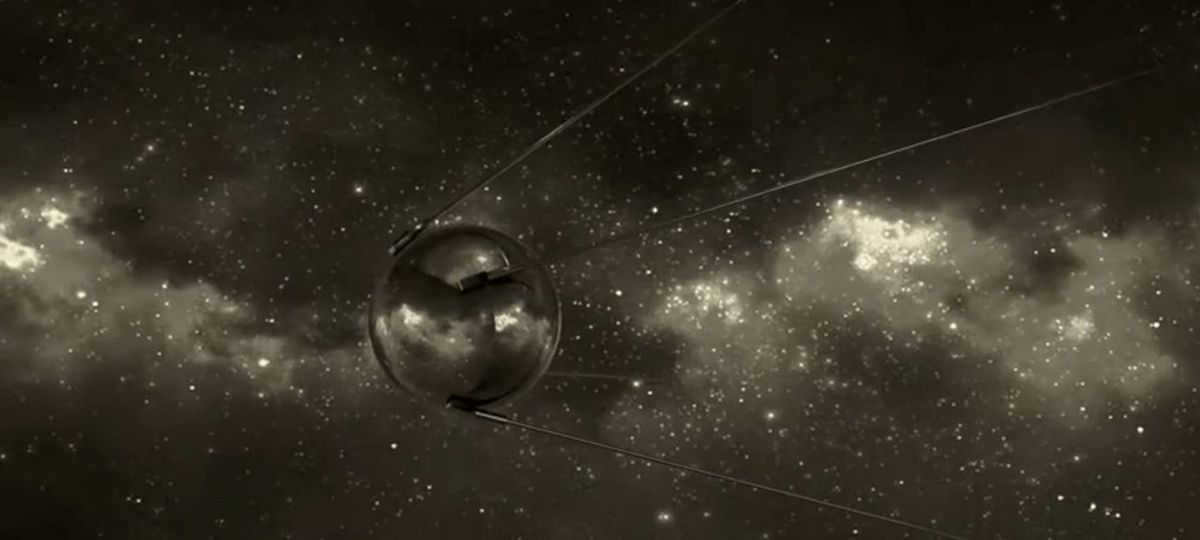
The USSR was also responsible for launching the first satellite into Earth’s orbit. A team of numerous scientists collaborated to create this groundbreaking satellite. On October 4, 1957, the satellite was successfully sent into orbit around our planet.
It remained in orbit for a precise duration of 3 months before ultimately burning up upon entering the Earth’s atmosphere. The satellite’s demise was a result of the intense friction it experienced upon colliding with the atmosphere. However, during its time in orbit, it completed an impressive 1,440 revolutions around the Earth. Unfortunately, its sensors only functioned for a period of three weeks.
This monumental achievement served as a catalyst for the exploration of space. In recognition of this significant event, Russia celebrates Space Forces Day on January 4th and has even erected a monument to commemorate the occasion. Visitors can admire this remarkable monument in Korolev, which drew a large crowd on its inaugural day in 2007.
Almost every schoolchild is familiar with Gagarin, but only a few adults can even name the last name of the first woman to go to space. If you happen to be one of those adults, then pay close attention.
We are referring to the Outstanding Woman of the 20th century, as recognized by the British organization “Annual Assembly of Women who have achieved the greatest success”. Specifically, Valentina Vladimirovna Tereshkova.
Originally, there were plans to send two groups of girls, but ultimately only one group of five was chosen. The leading contenders were: V.L. Ponomaryova, I.B. Solovyova, and V.V. Tereshkova, respectively.
In the end, Valentina was selected and she embarked on rigorous and intricate training. Preparation for the journey into space included time in a thermal chamber, weightlessness training, communication in sign language, and parachute training.





